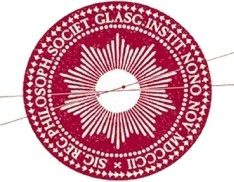Overview
Sandyford is an area located just to the west of Charing Cross. The Glasgow and District Burns Association website gives a brief history of the founding of this club:
‘The clubs’ [sic] motto is taken from the poem “Contented Wi Little and Cantie Wi Mair” written by Burns ninety-nine years before the club’s foundation in 1893. Burns admirers and appreciators in the Sandyford district of Glasgow had been circulated and invited to attend a public meeting called by John McDougall, then the master of the St. Vincent Sandyford Masonic Lodge. At the meeting McDougall was invited to chair the new club which then embarked on an almost unbroken run of annual dinners and other social events with the express purpose of Guid Fellowship which have raised large sums of money for benevolent purposes.’
(David Sibbald, ‘The Sandyford Burns Club‘, Glasgow and District Burns Association <http://www.robertburns.plus.com/Association.htm#Glasgow> [accessed 01 April 2018])
At the end of the nineteenth century, this club grew very quickly in a short amount of time: from a membership of 93 in 1895, three years later it had more than doubled its size (n. 213). From the evidence provided by issues of the Annual Burns Chronicle and Club Directory, it appears that this club only met a couple of times a year. For example, the annual meeting in 1904 was held on the third Tuesday in March, with the group only meeting once before for Burns night on January 25th. This may have changed around 1909, when it was reported that in addition to the annual Burns dinner and dance, the club also held ‘lectures and social and musical evenings in [the] Grand Hotel, Glasgow’ (‘Directory of Burns Clubs and Scottish Societies on the Roll of the Burns Federation, 1909’, in Annual Burns Chronicle and Club Directory, ed. by D. M’Naught, No. XVIII (Kilmarnock: Burns Federation, January 1909), p. 167).
The venue for the meetings would change over the years. In 1895, the club met at the Masonic Hall, Overnewton (Overnewton is an area roughly where Yorkhill is located, across the road from the Kelvingrove Museum). In 1903, the annual dinner was held at the Grand Hotel at Charing Cross on January 26th (presumably due to scheduling difficulties on the 25th). In 1905, the club met at the Masonic Chambers at 100 West Regent Street, and it was noted in brackets that this was the Secretary’s Office. The Grand Hotel would again be the venue for the meeting held in 1914.
Date of Existence
1893-present; Federated 1894
Source of Information
1. ‘Directory of Burns Clubs and Scottish Societies on the Roll of the Burns Federation, 1895’, in BC, ed. by D. M’Naught, No. IV (Kilmarnock: D. Brown & Co., January 1895), p. 179;
2. ‘Directory of Burns Clubs and Scottish Societies on the Roll of the Burns Federation, 1896’, in BC, ed. by D. ‘Naught, No. V (Kilmarnock: Burns Federation, January 1896), p. 136;
3. ‘Directory of Burns Clubs and Scottish Societies on the Roll of the Burns Federation, 1897’, in BC, ed. by D. M’Naught, No. VI (Kilmarnock: Burns Federation, January 1897), p. 154;
4. ‘Directory of Burns Clubs and Scottish Societies on the Roll of the Burns Federation, 1898’, in BC, ed. by D. M’Naught, No. VII (Kilmarnock: Burns Federation, January 1898), p. 142;
5. ‘Directory of Burns Clubs and Scottish Societies on the Roll of the Burns Federation, 1899’, in BC, ed. by D. M’Naught, No. VII (Kilmarnock, Burns Federation, January 1899), p. 159;
6. ‘Directory of Burns Clubs and Scottish Societies on the Roll of the Burns Federation, 1905’, in BC, ed. by D. M’Naught, No. XIV (Kilmarnock: Burns Federation, January 1905), p. 152;
7. ‘Directory of Burns Clubs and Scottish Societies on the Roll of the Burns Federation, 1909’, in BC, ed. by D. M’Naught, No. XVIII (Kilmarnock: Burns Federation, January 1909), p. 167;
8. ‘Club Notes’, ‘Obituary’, in BC, ed. by D. M’Naught, No. XIX (Kilmarnock: Burns Federation, January 1910), p. 12;
9. ‘Directory of Burns Clubs and Scottish Societies on the Roll of the Burns Federation, 1914’, in BC, ed. by D. M’Naught, No. XXIII (Kilmarnock: Burns Federation, January, 1914), p. 207;
10. Sandyford Burns Club: annual dinner, Grand Hotel, Charing Cross, Monday, 26th January 1903 (MLSC, Mitchell (AL) BNS24 SAN);
11. The Sandyford Burns Club: the fortieth anniversary dinner and ball: the Ca’doro Restaurant, Union Street, Glasgow, Wednesday 25th January 1933 at 6 p.m. (MLSC, Mitchell (AL) BNS24 SAN 907992);
12. ‘The Sandyford Burns Club’, Glasgow and District Burns Association <http://www.robertburns.plus.com/Association.htm#Glasgow> [accessed 08/05/15]
Repository
Mitchell Library Special Collections (MLSC) (Annual Burns Chronicle, and annual dinners)
National Library of Scotland (NLS) (Annual Burns Chronicle)
Reference Number
(See Source of Information, and below for Annual Burns Chronicle)
BNS19BUR (MLSC) (Annual Burns Chronicle)
General Reading Room (stored offsite), Y.233, available no. 1-34 25th Jan. 1892-Jan. 1925 (NLS) (Annual Burns Chronicle)
Additional Notes
Mr D. C. Wardrop (see listing for ‘Club Notes’, ‘Obituary’, 1910, above) was Secretary of this Burns club, in addition to being a member of Queen’s Park Burns Club. He was also one of the founders and first Secretary of the National Burns Club, Glasgow. See also Glasgow Queen’s Park (Burns Club) and the National Burns Club, Ltd., Glasgow.
This Burns club sent visitors to and held joint meetings with the following: Rosebery Burns Club, Glasgow Carlton Burns Club, Albany Burns Club, and Bridgeton Burns Club.
‘BC‘ refers to the Annual Burns Chronicle and Club Directory, which was published yearly since 1892. Copies are available at the Mitchell Library Special Collections and the National Library of Scotland. Many of these have been digitised and are available through the Robert Burns World Federation website: http://www.rbwf.org.uk/digitised-chronicles/.
This list of Burns chronicles as sources of information gives the first year the club was included in the chronicle, and thereafter only for the years where the information is different from the previous year’s listing. In keeping with the scope of this study (1800-1914), only the chronicles published between 1892 and 1914 are included.
